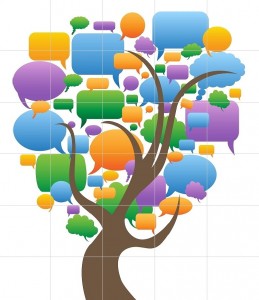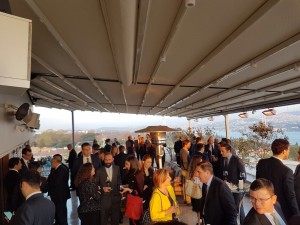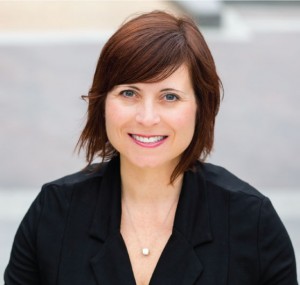 “A society without the dreams of children stops having a future.”
“A society without the dreams of children stops having a future.”
We are more interconnected than ever. We are on social media, connected through data and artificial intelligence, the Internet of Things, podcasts, 24-hour news, trade agreements (regardless of how they’re changing), global travel opportunities.
We are more connected across the world but also more polarized than ever. We have different views on data privacy, regulation, nationalism, trade, corruption and even family relationships.
Needless for me to say is I find value in incorporating a global mindset and quantum negotiation not only in our professional but also personal lives. The critical questions are why and how.
It may be best to start as simple as possible. Does something matter to you at a very deep level? So much that it feels almost paralyzing not to be in touch with the matter? Why does this matter to you so much? Do you need others to help you explore this matter?
Something that matters to me very much is the need not to have active shooter drills in schools anymore. A rather local matter but one that sadly has globalizing applicability and can benefit from the experiences of diverse societies and communities. So, I share this here on this global platform.
I do not only want to see students, teachers, school administrators not get killed. I want our children to live in a world where they feel safe in a school environment again. Why? The school is the place where our children’s dreams get their wings, where they gain confidence, where their dreams are born. A society without the dreams of children stops having a future. Our children deserve better, our society deserves better.
How am I however going to ever resolve my matter? I can’t make it happen on my own. “We need to eliminate the guns or we need to improve the mental health of our society” are two thoughts our society articulates. Both thoughts make sense. What can I personally do to improve the situation? My matter needs attention. Twenty years have passed since the Columbine shooting. Almost a dozen deadly mass school shootings since then and hundreds of others we haven’t heard about because of fewer casualties or events that derailed even my attention from my important matter. The guns are still here. Reports on increased insomnia, depression, loneliness, violent behavior and suicide rates are frequent topics in the news and routine medical surveys.
My question remains unresolved. How can I have a peace of mind again? Well…I don’t know if I am asking the right question here. Who would not want to have a peace of mind again? Who would not want their children to go to a school where there is absolutely no need for active shooter drills? Doesn’t it seem like we have more in common than not? Data shows. Most Americans support some sort of enhanced gun control reform. Many don’t see the need for weapons of war in civil use. As a matter of fact, this is frightening.
We still cannot stop the need for active shooter drills in our schools. Why? Could it be because we wait? We wait for the conversations to take place. We wait because we feel powerless without a political answer to this question. We wait. Another tragedy. And we wait. My matter is not only critical. Researchers say it is an epidemic. It is an epidemic. It needs an urgent resolution. Why do we wait?
There is no reason why we should not have some crucial conversations more often. Is there? We are the people. We are affected. Our children need to endure the active shooter drills because we hope that they will be safe in a tragedy or we are told that this will reduce risk. Our children are affected. They endure the active shooter drills thinking this is the way it needs to be, hoping that they are ready for the moment, or that the moment may never come. They adapt. They have hope. They are children. Do they adapt? Do they have hope? We are affected. Data shows. Mental health challenges are not confined to the world of adults anymore. I am deeply saddened, puzzled and honestly, ashamed when my children report about their active shooter drill. How do you feel when your children or grandchildren tell you about their experience? Do they tell? And…will they grow up thinking violence is acceptable…at least in some cases/situations?
Why not start more crucial conversations “now”? Why not start to make a personal difference every month, every week, every day? I realize I’m getting emotional about this. I need to be aware. There is the question about who is right. There is the issue of trust. I need to take a deep breath. I need to go for a walk. I need to connect with the universe. Who can I start a conversation with? Who will not be offended? Whom can I ask for forgiveness?
Who would not want to have a peace of mind? Can we start by just breathing together? Can we mention our needs to each other? Can we look eye to eye and realize how difficult it is to talk about our peace of mind about this matter or any other matter? Can we go for a walk or to a movie together to start talking? Can we overcome any sense of fear together? Why not?
We are affected together, and we are more connected than we think. Data shows. Here we are reflecting together. Yet we need to remember that we need to make a small effort to start conversations.
Let the year of 2020 be the year of more conversations with our fellow people and our children. Happy New Year. Let’s start working on some crucial conversations “now” in our families, apartment buildings, cafes, communities, over Skype, Zoom or other means, on our way towards our common goal – a peace of mind, a shared peace of mind.
Note: Contact us to talk more about the Global Mindset® and Quantum Negotiation™ or discuss another matter.






